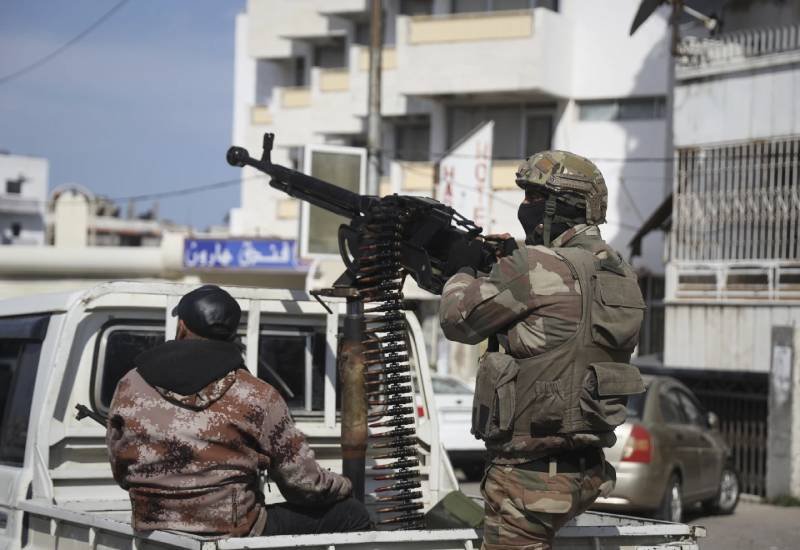- Clashes erupted in Syria’s coastal villages between new government forces and Assad loyalists.
- More than 200 people have been killed since the fighting began, including civilians.
- Syrian government forces were ambushed after attempting a detainment near Jableh.
- Interim President calls for unity and ethical conduct, urging an end to violence.
- International concerns rise as Russia and Turkey react to the ongoing crisis.
Violence has sharply increased in Syria’s coastal region as government forces launched attacks on several villages. The assaults, which began on Thursday and continued into Friday, resulted in over 200 deaths. This eruption of violence follows growing tensions between insurgents, who overthrew Bashar al-Assad’s regime, and Assad loyalists, who are determined to keep their grip on power.
According to the Syrian Observatory for Human Rights, the worst violence occurred in the coastal villages of Sheer, Mukhtariyeh, and Haffah. These areas, known for their loyalty to Assad, were stormed by government troops, killing at least 69 men. Interestingly, women were not harmed as the focus of the attack was on men. Experts believe these strikes are retaliation for recent attacks on government forces, which have sparked an even greater cycle of violence.
The Triggering Event: Detainment and Ambush
The conflict erupted when Syrian government forces tried to arrest a wanted individual in Jableh, a coastal city. During the operation, government forces were ambushed by Assad loyalists, igniting the series of clashes that followed. The ambush led to several casualties, and the violence quickly escalated into direct attacks on nearby villages.
According to the Syrian Observatory, the clashes saw not only government soldiers but also around 45 fighters loyal to Assad lose their lives. The death toll includes both civilians and members of the armed forces, emphasizing the widespread impact of the fighting. By Friday, the attacks had spread to other towns, including Baniyas, where another 60 people were killed, including women and children.
Sectarian Conflict Threatens Syria’s Stability
The ongoing fighting is causing widespread panic, particularly in towns like Jableh and Baniyas, which are still under Assad loyalist control. Residents have reported hearing heavy machine gunfire in residential areas, leaving many trapped in their homes. As a result, they cannot escape the violence. International observers are growing increasingly concerned, fearing that this could spiral into a broader sectarian conflict.
On Friday, Interim President Ahmad al-Sharaa addressed the nation, calling for an immediate end to the violence. He urged all sides to refrain from attacking civilians or engaging in revenge killings. “When we compromise our ethics, we reduce ourselves to the same level as our enemy,” he said. He further stressed the importance of justice and unity, urging all armed groups to surrender their weapons to help restore peace.
However, despite these calls, tensions remain high. The Alawite community, a strong base of support for Assad, remains fearful of retaliation from the new government. With attacks on both loyalists and civilians, the threat of sectarian violence continues to grow. This only complicates the already difficult path to national reconciliation.
Russia’s Response: Calls for De-Escalation
As violence intensifies, Russia has once again pledged its commitment to Syria’s sovereignty and territorial integrity. Russian officials have voiced serious concerns about the growing violence, emphasizing that foreign powers involved in the Syrian conflict must focus on de-escalation. In a written statement, the Russian foreign ministry called for efforts to “normalize” the situation and offered support for Syria’s new government, while still acknowledging ties with the Assad regime.
Russia’s involvement in Syria started in 2015 when it intervened to help Assad. While Moscow has developed a relationship with the new government, the situation remains uncertain. Specifically, civilians in towns like Jableh are now asking for Russia’s protection, creating a dilemma. It’s still unclear how Russia will navigate these new challenges, and it’s important to see how they react.
Meanwhile, Turkey, once a supporter of rebels fighting against Assad, has raised alarms over the current situation. The Turkish Foreign Ministry warned that the ongoing fighting could further destabilize Syria. Oncu Keceli, a spokesperson, explained that while security efforts continue, targeting security forces could undermine Syria’s unity. Turkey fears that the conflict could escalate into a larger civil war, which would have severe regional consequences.
As both Russia and Turkey weigh their responses, the international community keeps a close watch on Syria. Despite efforts from global powers to mediate, the violence continues to deepen. The ongoing fighting further divides the country, making any peaceful resolution seem even more distant.
The Struggle for Syria’s Future
The ongoing violence is a stark reminder of the deep divisions that persist in Syria, despite the fall of the Assad regime. The civil war that began in 2011 has resulted in over 500,000 deaths and displaced millions of people. While the new government remains committed to restoring peace, these recent clashes highlight the fragility of the situation and the difficulties in reconciling the country’s many factions.
The call for unity by President al-Sharaa faces significant obstacles, as the violence between loyalists and government forces exacerbates sectarian divides. The new government’s ability to maintain control over the nation remains in question as the conflict shows no signs of abating.


